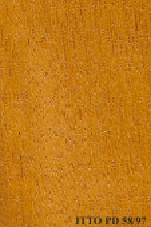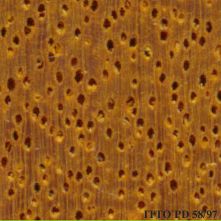
BILINGA, OPEPI (Nauclea diderrichii)
Trade Name
Bilinga, Opepi
Scientific Name
Nauclea diderrichii Merr.
Family
RUBIACEAE
Common Names
Bundui (Sierra Leone); Opepi (Nigeria); Opepi (United Kingdom); N'Gulu-Maza (Zaire); Bonkangu (Zaire); Aloma (Gabon); Bilinga (Equatorial Guinea); N'Gulu-Maza (Congo); Mokessé (Congo); Linzi (Congo); Kilu (Central African Republic); Gulu-maza (Angola); Wei-yidi; Urherekor; Uburu; Toumbo; Tebotue; Sukisia; Sibo; Owoso; Owessu; Odosi; Obiache; Nguebe; N`gulu; Mtoma; Moukonia; Mokesse; Mamoundi; Linzi; Kusiabo; Kusiabe; Kusiaba; Kusia papa; Kilu; Kantate; Issoula; Ikaka; Gulumanzi; Gulu; Groussou; Gluu; Etinda; Eridinda; Ekusiawa; Eke; Edjin; Echinchin; Dunkake; Dubawile; Doe-yah; Brimstone; Bosima; Bosema; Bonkese; Bonkangu; Bohia; Bedo; Awesu; Asibo; Aloua; Abouko; N`Gulu-maza (Zaire); Opepe (United Kingdom); Engolo (Angola); Kilingi (Uganda); N`gulu-maza (Democratic Republic of Congo); Bilinga (Gabon); Aloma (Equatorial Guinea); Akondoc (Cameroon); Opepe (Nigeria); Kusia (Ghana); Badi (Côte d`Ivoire)
Scientific Name Synonyms
Sarcocephalus trillesii Pierre; Sarcocephalus diderrichii De Wild.; Nauclea trillesii (Pierre) Merr.
Description Of The Tree
Botanical Description
The tree reaches a height of 50 m. The bole is clear, unbuttressed, cylindrical, and straight, from 26 to 32 m in length. The trunk diameter attains 100 up to 200 cm.
Natural Habitat
Nauclea diderrichii is a widespread species. It occurs over a wide range of habitats, and is often found in pure stands.
Natural Distribution
West, Central and East Africa, from Sierra Leone to Uganda and Angola.
Plantations Available?
It is a long rotation species for plantation. The duration of the rotation is 30 to 40 years, to reach 50 cm in diameter.
Wood Identification
Anatomic Description Of Wood
Wood diffuse porous. Vessels exclusively solitary (over 90%). Tangential diameter of vessel lumina 200 micras or more (large). Vestured pits. Vessels per mm2 less than 6 (rare). Simple perforation plates. Apotracheal axial parenchyma diffuse and/or diffuse in aggregates. Non-crystals in axial parenchyma cells. 5 to 8 cells per parenchyma strand. Rays more than 10 per mm (abundant). Rays non-storied. Rays 1 to 4 seriate. Heterogeneous rays and/or multiseriate heterogeneous rays. Non-septate fibers. Fibers with distinctly bordered pits. Vessel-fiber pits similar to vessel-ray pits in size and shape.
-
 Wood Macro Photo Tangential Plane
Wood Macro Photo Tangential Plane
-
 Wood Micro Photo Of Transversal Section
Wood Micro Photo Of Transversal Section
Availability
Cites Status
Unrestricted
General Wood Description
Color
The sapwood is whitish to pale yellow, it has a thickness of 5 cm. The heartwood is yellow to orange yellow, it is clearly demarcated.
COLOR INDEX (1=Black, 7=Light yellow,white)
5
Grain
The grain is highly and systematically interlocked; special care is needed when drying because of frequent risks of distortion.
Texture
The wood is typically medium in texture.
Natural Durability
Very durable to decay; without preservative treatment. This species is especially suited for all the uses with risks of permanent or long-lasting humidification. Resistant to termites attack. Heartwood is resistant to Lyctus attacks.
Natural durability index (1= Very high durability, 7=Vey low durability)
1
Internal Growth Stresses
No residual stresses are reported in this species.
Silica Content
Silica Content: It is reported to have a negligible amount of silica. Contents over 0.05% may affect wood processing. Silica Value: 0.01
Resistance To Impregnation
Moderately easy to treat with a partial penetration of the preservative products.
Wood Physical Properties
Basic Density or Specific Gravity (O.D. weight/vol. green) (g/cm³)
0.68
Air-dry Density (Weight and volume at 12%MC) (g/cm³)
0.76
Total shrinkage Tangential (Saturated to 0%MC) (%)
7.5
Total shrinkage Radial (Saturated to 0%MC) (%)
4.5
Drying Defects
Ease of Drying: Drying is moderately difficult to difficult; special care is systematically needed. Drying Defects: Risks of distortions. Kiln Schedules: Schedule proposed as a reference by comparison with well known species taking into account to the general technological behavior of this species.
Recommended Dry Kiln Schedule
FR-10
Dimensional stability ratio (Total Tangential Shrinkage %/Total Radial Shrinkage %)
1.6
Wood Chemical Properties
Wood Mechanical Properties
Bending Strength (MOR),12%MC (kgf/cm²)
973
Stiffness (MOE) 12%MC (kgf/cm²)
149421
Compression parallel to fiber 12%MC (kgf/cm²)
638
Compression perpendicular to fiber 12%MC (kgf/cm²)
86
Shear strength radial 12%MC (kgf/cm²)
86
Janka hardness (side) 12%MC (kgf)
721
Janka hardness (end grain) 12%MC (kgf)
806
Workability
Sawing
Sawing of this species requires powerful equipment.
Rotary Veneer Cutting
Suitable for slicing.
Sliced Veneer
Suitable for slicing.
Blunting Effect
Slight blunting effect; ordinary tools can be used for sawing and machining.
Machining
It needs powerful tools for processing. Possible difficulties caused by interlocked grain are reported.
Planing
Moderately easy; tools must be cautiously sharpened.
Moulding
Moderately easy; tools must be cautiously sharpened.
Turning
30
Boring
Moderately easy; tools must be cautiously sharpened.
Mortising
Moderately easy; tools must be cautiously sharpened.
Nailing
Pre-boring is necessary.
Gluing
Difficult to glue because of high density.
Sanding
Difficult to obtain very good results because of interlocked grain.
Polishing
Can be polished without surface preparation.
Steam Bending
Steam bending is difficult.
Response To Hand Tools
Working with hand tools is difficult.
REFERENCED USES
End Uses Summary
HOUSING GENERAL, beams, joists, boards, flooring, parquet, frames, steps, panelling, fittings, FURNITURE AND CABINETS, luxury furniture, cabinets, PLYWOOD AND VENEER, Decorative veneer, TURNING, ornaments, turned furniture, CONTAINERS, truck bodies, truck flooring, NAVAL CONSTRUCTION, boat deck, port storage
General Housing
- 10 - Silica in Timbers
Beams
- 11 - Prospect: The wood database
Joists
- 12 - Tropical timbers of the world. Part I-Tropical American Species
Boards
- 13 - Dry kiln schedules for commercial woods. Temperate and tropical. Section III. Latin American (Mexico, Central, and South America) Woods–Conventional Temperatures
Flooring
- 14 - Handbook of Hardwoods
Parquet
- 15 - Empire Timbers
Frames
- 16 - Woods of the World
Steps
- 17 - Tree Conservation Database
Paneling
- 18 - W3TROPICOS Missouri Botanical Garden
Fittings
- 19 - Silica in Timbers
Furniture Cabinets
- 21 - Tropical timbers of the world. Part III-Southeast Asian and Oceanian Species.
Furniture, Luxury
- 22 - Dry kiln schedules for commercial woods. Temperate and tropical. Section IV-Asian and Oceanian Woods
Cabinet
- 24 - Empire Timbers
Panels, Veneers
- 25 - Directory of Timber Trade Malaysia
Decorative veneer
- 28 - Ministry of Agriculture, Fisheries & Forest of Fiji
Turning
- 30 - Embassy of Honduras in Japan
Ornaments
- 31 - Embassy of Colombia in Japan
Turned Articles
- 32 - Embassy of Cote d`Ivoire in Japan
Truck Body
- 53 - Timbers of the New World
Truck Flooring
- 54 - Bulletin of the Government Forest Experiment Station N.157: Identification of Tropical Woods
Shipbuilding
- 55 - Tropical Timber Atlas of Latin America
Boat Decking
- 59 - Programa Nacional de uso Sostenible de los Bosques e Incremento a las Exportaciones.
Port Storage
- 62 - Estudio Tecnológico de Maderas del Perú (Zona Pucallpa) Vol I
Please Provide Information To View Producer Information